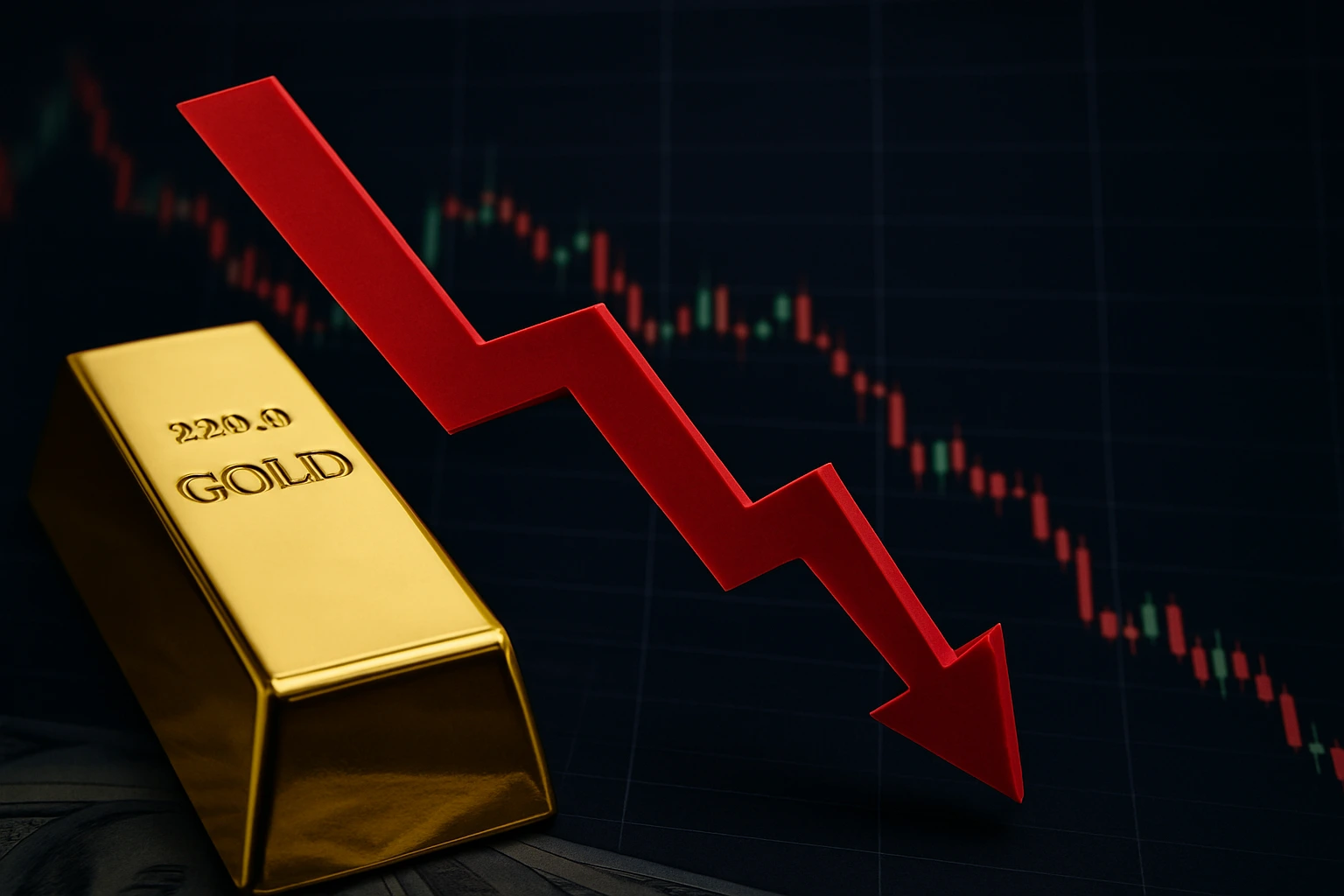Gold experienced a dramatic price crash on Tuesday, posting its sharpest one day decline in five years as a stronger dollar and profit taking by investors halted the yellow metal’s record breaking rally.
Spot gold dropped 5.5 percent to $4,115.83 per ounce by mid morning in New York, while US gold futures for December delivery slid 5.3 percent to $4,129.20.
The gold price crash came just one day after the metal hit an all time high of $4,381.21 per ounce, ending months of relentless buying driven by safe haven demand and expectations of lower US interest rates.
The gold price crash followed an extraordinary year long surge that lifted the metal by nearly 60 percent in 2025. Investors poured into gold amid geopolitical tensions, inflation concerns, and aggressive central bank purchases.
However, with the US dollar strengthening 0.4 percent on Tuesday, the bullion rally lost steam. The dollar’s rise made gold more expensive for holders of other currencies, while improved sentiment in equity markets diverted funds from safe haven assets.
Other precious metals also faced sharp losses silver plunged 8.4 percent to $48.06 per ounce, platinum fell 7 percent to $1,523.30, and palladium slipped 6.6 percent to $1,398.
“After such a strong run, a correction was inevitable,” said Adam Lewis, senior commodities analyst at Frontier Global Markets. “The dollar’s rebound triggered a wave of algorithmic selling, leading to today’s gold price crash.”
Market experts pointed to heightened volatility and investor caution following gold’s record highs. “Gold dips were being bought as recently as yesterday, but the sharp jump in volatility is flashing warning signs,” said Tai Wong, an independent metals trader based in New York.
Jim Wyckoff, senior analyst at Kitco Metals, said stronger risk appetite was weighing on safe haven demand. “Better risk appetite early this week is bearish for the safe haven metals,” Wyckoff said in a note.
Despite the gold price crash, analysts say the long term fundamentals remain supportive. “Central banks are still diversifying away from the dollar, and interest rate cuts are likely coming,” said Sarah Levine, chief commodities strategist at Horizon Analytics in London.
“Short term volatility doesn’t erase the bigger structural drivers.” The 5.5 percent drop marked gold’s steepest single day percentage decline since August 2020.
- Spot gold: down 5.5 percent to $4,115.83 per ounce
- Gold futures: down 5.3 percent to $4,129.20 per ounce
- Silver: down 8.4 percent to $48.06 per ounce
- Platinum: down 7 percent to $1,523.30 per ounce
- Palladium: down 6.6 percent to $1,398 per ounce
Prior to the gold price crash, the metal had surged roughly 60 percent in 2025 amid persistent inflation fears and global uncertainty.
In India, one of the world’s largest gold consumers, jewelers reported brisk activity despite the sharp correction. “The timing is fortunate prices have cooled right before the festival season,” said Ramesh Kumar, a jeweler in New Delhi.
“We expect buyers who were hesitant yesterday to return now that rates have dropped.” In the US investors echoed mixed emotions. “I took profits early this morning,” said David Morales, a retail investor in Chicago.
“After such a massive run, the gold price crash didn’t surprise me. I’m waiting for signs of stabilization before buying again.” Traders now await key economic indicators that could determine whether gold stabilizes or faces further losses.
The delayed US Consumer Price Index (CPI) report for September, expected Friday, is forecast to show a 3.1 percent annual rise.
Markets also anticipate a 25 basis point interest rate cut by the Federal Reserve next week, a move that typically supports non yielding assets such as gold.
“Volatility will remain elevated until the Fed meeting,” said Maria Zhang, senior metals analyst at Loxley Capital in Singapore. “If rate cuts proceed as expected, it could cushion the gold price crash and restore investor confidence.”
US & China relations may also influence bullion demand, with President Donald Trump scheduled to meet Chinese President Xi Jinping next week.
Analysts believe any escalation or thawing in global trade tensions could quickly shift risk sentiment across the bullion market.
Tuesday’s gold price crash underscores how swiftly investor sentiment can change in volatile markets. A firmer dollar, improved risk appetite, and profit taking converged to deliver the steepest one day fall since 2020.
While the sell off rattled markets, analysts say the underlying drivers inflation, geopolitical risk, and central bank diversification remain intact.
Whether the metal rebounds or consolidates in the near term will depend on upcoming inflation data and Federal Reserve policy signals.
For now, traders are bracing for more turbulence in the global gold market as uncertainty continues to dominate financial headlines.

